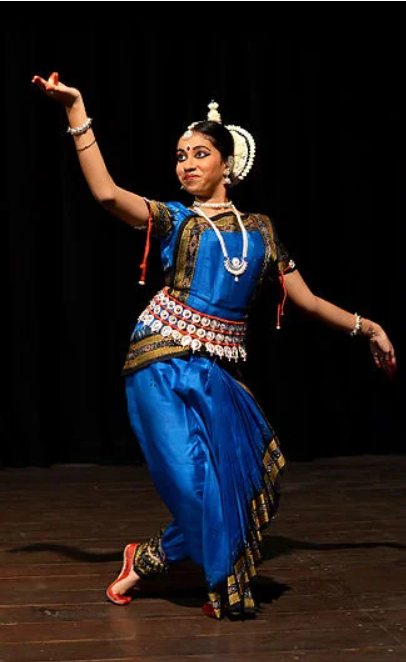~ Samridhi Prakash
The diverse terrains of our motherland host a variety of vibrant dance forms with eight of them carrying the tag of ‘Indian Classical Dance’; Odissi dance being one. The sanctity of the same has been flowing through the steps and rhythms of various Gurus who contribute tirelessly to preserve this traditional art.
Origin
Dance has inhabited the Indian culture since time immemorial. Similarly, the Odissi dance has an ageless history, with the first written record dating back to the 1st century BCE during King Kharvela’s reign. It started as a ritual of paying respects to Lord Jagannath, Lord Balbhadra, and Goddess Subhadra. The various inscriptions in temples of Odisha provide us with the knowledge of Odissi back in the golden days. Shri Jayadev’s musical compositions were the base of classical Odissi music back then and are still very much prevalent today. Dancing by females was institutionalised through the grooming process of Maharis and Devadasis.
Essentials
Odissi sketches its fundamentals from the postures of Lord Jagannath with the arms and feet forming a half square called ‘Chauka’. The second most prominent posture is called ‘Tribhangi’ (other important positions- abhanga, samabhanga), denoting the three bends in the body- neck, waist, and knee. This dance is the epitome of grace and beauty with every step enhancing the skill and features of the dancer. It requires hours of sweat and years of practice to perfect the postures and as we dancers call it, the ‘bhavs and bhangimas’. There exist a variety of head, neck, eye, foot, and hand movements that pour together to form the grammar of Odissi, i.e., the walking style (chaali), the turns (bhramari), the expressions (bhav), and the innumerable enchanting dance pieces.
Presentation
The chronological sequence of presenting this art form starts from the very basic essential, Manglacharan- a hymn sung in reverence of a God or Goddess, followed by pushpanjali (flower offering), bhumi pranam (salutation to the holy ground), and trikhandi pranam (an ode to the God, the Guru, and the audience). Next comes Battu– a very fast-paced pure dance or ‘nritta’. It lacks the expressions as well as any song or recitation. This is followed by Pallavi, a combination of rhythmic music based on a raag involving the graceful neck, head, eye, and torso movements with complex footwork. Pallavi is followed by ‘Nritya’ or Abhinaya, an interplay of footwork and expressions. It is usually based on a Sanskrit or Odiya song and the story is communicated to the audience through appropriate hand gestures and facial movements. ‘Natya’ follows next, with the mesmerising narration of mythological stories called dance dramas. This leg of the recital is the most expressive as well as experimental, providing the dancers with a creative vent. The recital ends with an extremely fast-paced pure dance called Moksha. It is so-called to convey the spiritual liberation experienced by the dancers after having been bestowed with the honour of performing the recital and is symbolic of the purity of this art.
Personal Tribute
I have been an ardent Odissi learner since the age of 4 and received training as well as a diploma under one of the current greatest exponents of Odissi dance in India, Padmashree Guru Geeta Mahalik. This art has blessed me with the opportunities of touring and performing at various cultural festivals in our country as well as abroad. As a child, there were several evenings when I threw tantrums, not wanting to attend the dance classes as it used to clash with my ‘playing’ hour. It was my mother and my Guru who saw the dormant potential in me and worked tirelessly through every mood, every weather to inculcate this discipline in me. Today, Odissi comes as naturally to me as breathing. But that doesn’t mean dancers don’t need constant practice because dancing is an art that is evolving everyday just as we all are and to stay abreast with the changes in our bodies, as well as the techniques of the dance continuous practice and fitness, is an essential. I’m forever indebted to my Guru, my mother, and this glorious art for blessing me with this way of life.
Must read- https://skchildrenfoundation.org/values-of-indian-culture/





